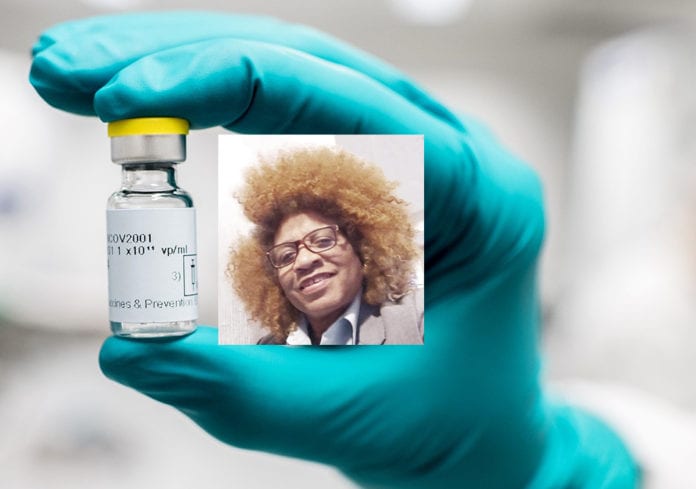On Friday, Feb. 26, I went in for my latest visit for the Johnson & Johnson vaccine trial study. The next day, the FDA approved the one-shot vaccine for emergency use.
The visit marked day 71 since I signed on to the vaccine trial study program at St. Jude Children’s Hospital. I took the shot and I have been checked at designated intervals for changes in my blood, vital signs and for possible symptoms of COVID-19.
I don’t yet know if I was in the placebo group or got the real deal. I have the option to “unblind” myself and get one of the three vaccines now available. That’s the route I plan to take. Stay tuned for the next installment of the experience that I am journaling as part of the trial.
I give several vials of blood for study each visit, and I take twice-weekly surveys about my condition, changes in health – any marked variation in overall health. I wanted to help, to do something. We have lost so many on the journey to learning more about this disease.
Initially, I thought it would be a full two years before the vaccine was ready. That’s the length of the study. Continuing to study test subjects is important.
The emergency-use approval is a tremendous development, adding to the arsenal of weapons to fight COVID-19.
Two exciting characteristics of this particular vaccine create a thrilling potential for more equitable distribution of immunization than the other two vaccines. Both the Pfizer and Moderna vaccines require two shots for full protection against the coronavirus. Also, they must be specially refrigerated in super-cold storage.
With the J&J vaccine, only a single dose is required for full immunization, and no extraordinary refrigeration is necessary. One dose, and you’re done. The J&J is good with normal refrigeration.
Disparities in vaccinations across the country are documented. Communities of color have borne the brunt of COVID-19’s ravages, suffering the majority of daily new cases, severe illness with hospitalizations and deaths.
Memphis, which is 60 to 65 percent Black, makes up most of Shelby County. As of March 2, Shelby County records indicate – of 152,507 vaccines administered – 28.4 percent were to Black citizens and 44.9 percent were to White residents – a sizeable difference. Vaccine recipients voluntarily report race data; 11.6 percent reported no race or ethnicity.
Many African Americans, particularly seniors, do not have viable transportation. Neither do they have readily available access in the home. And, if they manage to get that first shot, they must figure out a way to come back for the second.
Now you can see the value of the J&J, single-shot option. A single dose will do it and the need only for regular refrigeration makes the vaccine more mobile and accessible to those who are homebound and otherwise hampered in getting to a vaccine site by health or disability.
Even without a viable vaccine for children, the J&J vax opens the possibility of more expedient achievement of herd immunity, which occurs when 70-75 percent of a total given population has received the vaccine.
The trial study will continue and I will go in monthly as directed. Maintaining the experimental trial study at St. Jude opens up a greater possibility for making the vaccine even better.
So, OK, let’s talk about efficacy. Percentage numbers for effectiveness have varied – from 50 percent to 72 percent – depending on where in the world you look. In the U.S., only 50 percent efficacy is required to obtain “emergency use” status.
Sure, we all wish the J&J vax hovered in the 90s percentage-wise. And while the whole percentage/numbers aspect can get complicated, there are two numbers to lock in on.
The J&J vaccine is 100 percent effective against severe illness resulting in hospitalization, and 100 percent effective against death from COVID-19 after 28 days.
As I think about that, J&J might have saved the lives of two brothers. They were Jency’s brothers. She is my friend and their family watched the two brothers die 10 days apart, the youngest went first.
Many of our friends and loved ones, who were infected before any of the vaccines were ready, might have been saved. Doctors did all they could, then watched helplessly as patients’ lives slipped away with respiratory failure and damaged organs. Family members, who could not be near their sick for the danger of infection, wept as a medical staffer Face-timed their final goodbyes to dying loved ones.
The death is staggering, with 500,000-plus across this country. Empty chairs around the table; Empty spaces left in the hearts of those who have had to bury our dead.
No more of this rationalizing about not getting vaccinated. There has been enough death, enough loss, too many tears, too much grief. When the vaccine becomes available, let us all get vaccinated. Our children need us to protect them by protecting ourselves.
Getting vaccinated is a village call. Check on others who may need help getting to a vaccination site. Encourage others who are wary of getting the vaccine. The African-American community is at greater risk for illness and death from COVID-19. We do not have the luxury of toying with anti-vax sentiment.
Don’t let our dear ones have died in vain. Let the spirit of the village and strength from the beloved community rise up and embrace the help that God has sent.



